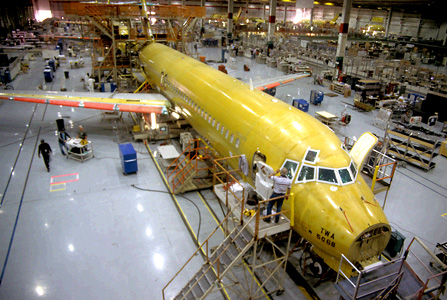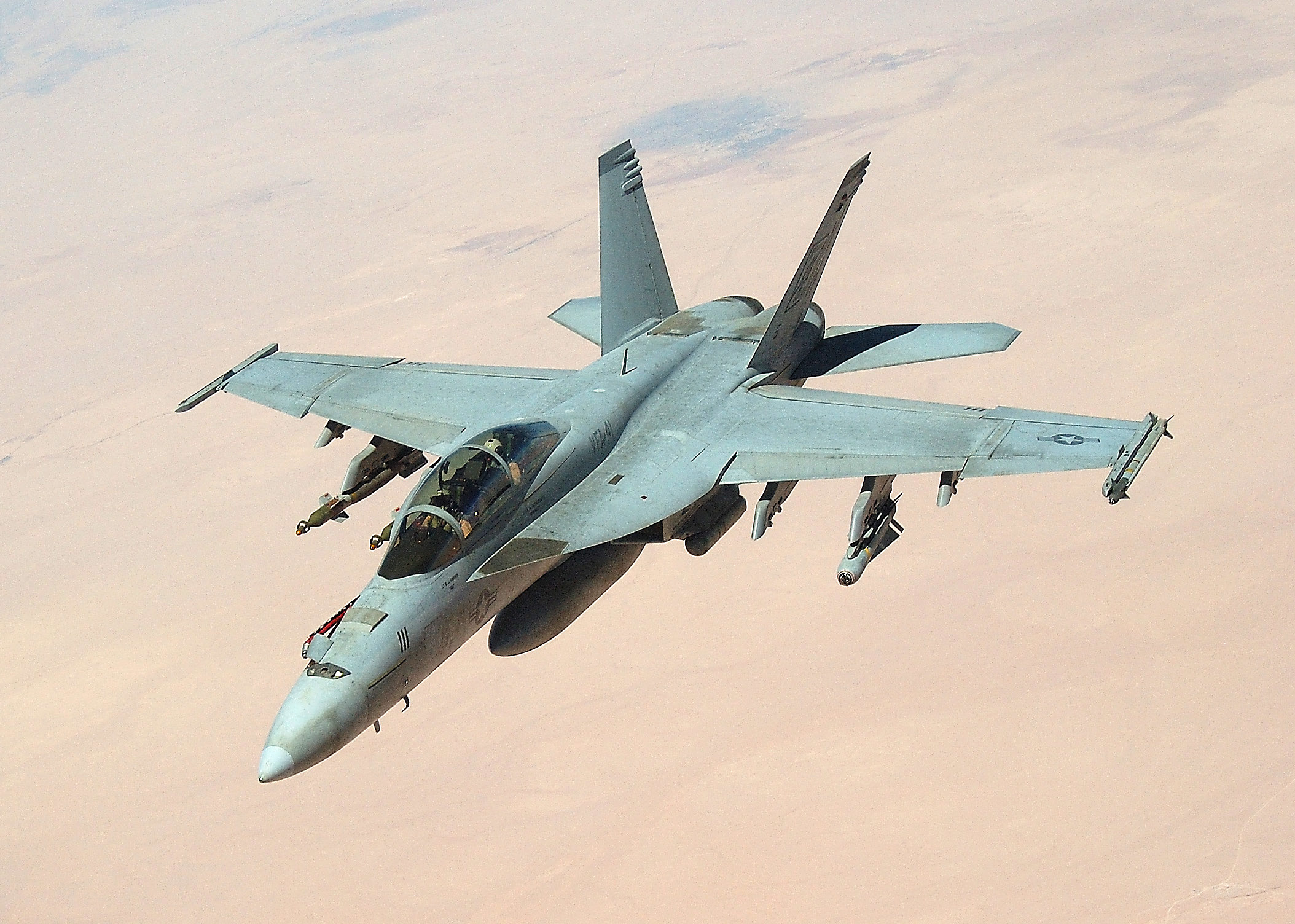Boeing << BOH ihng >> Company is one of the world’s largest manufacturers of aerospace equipment. The company makes commercial passenger jets, military aircraft, and spacecraft. It also operates a network of communications satellites. The Boeing Company has headquarters in Arlington, Virginia.

William Edward Boeing, a Seattle industrialist, founded the company in 1916 as Pacific Aero Products Company. That year, the company produced its first aircraft, called the B&W. By the 1930’s, Boeing was the leading manufacturer of fighter aircraft for the United States armed forces. Boeing soon began developing jet aircraft. In the late 1940’s, the company started making jet bombers for the armed forces. In the early 1950’s, Boeing began producing passenger jets. Well-known models of Boeing passenger jets have included the 707, 727, 737, 747, 767, DC-3, DC-10, MD-80, and MD-90. The 787 passenger jet entered service in 2011. The plane, dubbed the Dreamliner, is constructed with composite materials (carbon-reinforced plastics) that are lighter than conventional metal, making the plane more fuel-efficient.
Boeing continues to manufacture military aircraft, including the AV-8B Harrier II, a V/STOL (Vertical/Short Take-Off and Landing) attack plane; the F-15 Hornet and the F/A-18 Super Hornet fighter planes; the C-17 Globemaster III, a transport plane; and the V-22, CH-47, and AH-64D Apache Longbow helicopters. Boeing built the U.S. space shuttle orbiters and their main engines. In addition, the company has built satellites for the Global Positioning System (GPS), a precision navigation system. 
During the 1990’s, Boeing strengthened its position as the aerospace industry leader through mergers with two other major manufacturers. The company merged with Rockwell International’s aerospace and defense operations in 1996, and with McDonnell Douglas Corporation in 1997. Boeing became one of the primary contractors for the International Space Station (ISS).
In 2014, Boeing and SpaceX, an American spacecraft company, won contracts to provide the National Aeronautics and Space Administration (NASA) with a commercial spacecraft to carry American astronauts to the ISS in future missions. The deal marked the first time private companies were tasked with providing transportation to the ISS. The U.S. space shuttle and Russia’s Soyuz spacecraft had previously provided that service. NASA astronauts first traveled to the ISS in a SpaceX spacecraft in 2020.
Boeing developed the Max series, a new line of its 737 commercial aircraft, in the 2010’s. The new planes had more efficient engines and a longer flight range than older 737’s. The 737 Max 8 model debuted in 2017, and the 737 Max 9 went into service in 2018. In March 2019, following deadly crashes, both models were taken out of service by many airlines and governments around the world, including the U.S. government. The planes were grounded while aviation experts investigated the cause of the crash of a 737 Max 8 aircraft in Ethiopia on March 10. All 157 passengers and crew members were killed shortly after takeoff from Addis Ababa. The crash was similar to one involving the same model of aircraft in Indonesia in October 2018, in which 189 people were killed. Boeing suspended production of its Max jets from January to May 2020. It also worked to identify and fix the problems that caused the crashes.
In September 2020, the U.S. House of Representatives presented its investigative report on the crashes. According to the report, faulty technical assumptions by Boeing’s engineers, as well as insufficient oversight by the U.S. Federal Aviation Administration (FAA), contributed to the crashes. Software on the plane that was meant to prevent a stall instead put both planes into a nose dive. In November, after Boeing had completed a number of design changes to the plane and updated flight training programs, the FAA lifted its order grounding the 737 Max. The following month, several airlines—in Brazil, Mexico, and the United States—began to fly the plane again.
